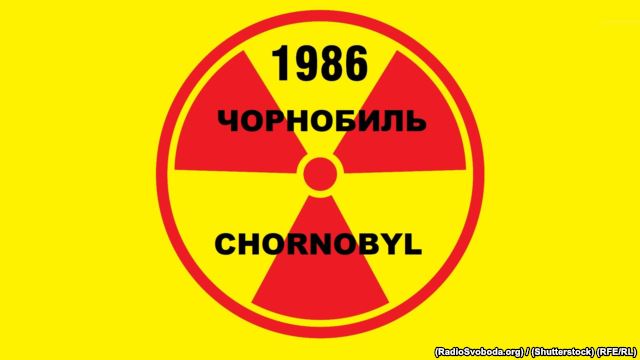CHERNOBYL: 30 YEARS AFTER TRAGEDY
 Wall Street Journal, RFU/RL, Seattle Times, Kyiv Post
Wall Street Journal, RFU/RL, Seattle Times, Kyiv Post
U.S.-Ukraine Business Council (USUBC), Wash, D.C.
Tue, April, 26, 2016
|
30 YEARS AFTER CHERNOBYL DISASTER,
AN ARCH RISES TO SEAL MELTED REACTOR
By Nathan Hodge, Wall Street Journal, New York, Sun, April 24, 2016
 A workforce of around 2,500 people is finishing a massive steel enclosure that will cover A workforce of around 2,500 people is finishing a massive steel enclosure that will cover
Chernobyl's reactor 4, where the radioactive innards of the nuclear plant are encased in a concrete sarcophagus hastily built after the disaster. The zone is now aglow
with the reflective safety vests of construction workers.
If all goes to plan, the new structure-an arch more than 350 feet high and 500 feet long-will be slid into place late next year over the damaged reactor and its nuclear fuel, creating a leak-tight barrier designed to contain radioactive substances for at least the next 100 years.
Learn More
______________________________________________________________________________
|
|
|
LIQUIDATORS LIVE WITH LEGACY OF CHERNOBYL
By Christian Borys, RFE/RL Russia, Fri, April 23, 2016
The buses are lined up by midmorning, packed with tourists anxious to enter one of the world's most infamous attractions. The excitement is lost on members of the 633rd Fire Brigade of Ivano Frankivsk, however.
For them, the Chernobyl exclusion zone represents the worst 48 days of their lives.
These men were among the nearly 600,000 officially identified as liquidators -- citizens, reservists, and military personnel who were sent to the Chernobyl nuclear plant in Pripyat, Ukraine, to mop up the world's worst nuclear accident.
After a systems test resulted in the explosion of one of the plant's four nuclear reactors on April 26, 1986, they were rounded up from across the Soviet Union and sent to the disaster zone.
Learn More
|
|
|
|
CHERNOBYL PLANT TO REMAIN A THREAT FOR 3,000 YEARS
By Matthew Schofield, Seattle Times, Seattle, WA, Fri, April 23, 2016 
PRIPYAT, Ukraine - Before the fire, the vomiting, the deaths and the vanishing home, it was the promise of bumper cars that captured the imagination of the boys.
It will be 30 years ago Tuesday that Pripyat and the nearby Chernobyl power plant became synonymous with nucl
ear disaster, that the word Chernobyl came to mean more than just a little village in rural Ukraine and that this place became more than just another spot in the shadowy Soviet Union.
Learn More
|
|
|
'BABUSHKAS OF CHORNOBYL' SEE NO REASON TO LEAVE HOME
Award winning documentary about 3 women livings in exclusion zone
By Anna Yakutenko, Kyiv Post, Kyiv, Ukraine, April 21, Thu, 2016
When U.S. author and documentary maker Holly Morris came to film a story on the new structure that is to cover the ruined reactor No. 4 at the Chornobyl nuclear power plant, she was surprised to see smoke rising from the chimneys of houses in nearby woods.
After the reactor exploded at the Chornobyl plant in 1986, the authorities evacuated 130,000 people from all villages within 30 kilometers of the disaster site. The radioactively contaminated area was dubbed the Exclusion Zone, and officially nobody is supposed to live there.
But as Morris discovered, around 100 elderly women have returned to the zone over the years, the yearning for their homes overriding their fear of radioactivity.
Learn More
|
|
|
|
 USUBC COLLECTION OF OVER 160 UKRAINE HISTORIC NEWS PHOTOGRAPHS 1918-1997
USUBC COLLECTION OF OVER 160 UKRAINE HISTORIC NEWS PHOTOGRAPHS 1918-1997
 "HOLODOMOR 1932-33: THROUGH THE EYES OF UKRAINIAN ARTISTS" - COLLECTION OF POSTERS AND PAINTINGS
"HOLODOMOR 1932-33: THROUGH THE EYES OF UKRAINIAN ARTISTS" - COLLECTION OF POSTERS AND PAINTINGS
 USUBC COLLECTION OF HISTORIC PHOTOGRAPHS ABOUT LIFE AND CAREER OF IGOR SIKORSKY PHOTOGRAPHS - INVENTOR OF THE HELICOPTER
USUBC COLLECTION OF HISTORIC PHOTOGRAPHS ABOUT LIFE AND CAREER OF IGOR SIKORSKY PHOTOGRAPHS - INVENTOR OF THE HELICOPTER
 Ten USUBC Historic Full Page Ads in the Kyiv Post
Ten USUBC Historic Full Page Ads in the Kyiv Post

 Wall Street Journal, RFU/RL, Seattle Times, Kyiv Post
Wall Street Journal, RFU/RL, Seattle Times, Kyiv Post








 A workforce of around 2,500 people is finishing a massive steel enclosure that will cover
A workforce of around 2,500 people is finishing a massive steel enclosure that will cover



















